A pair of BMW R NineT customs channeling the past and the future, a glorious Rickman Metisse, and an all-time classic Honda race bike. It’s a mixed bag this week.
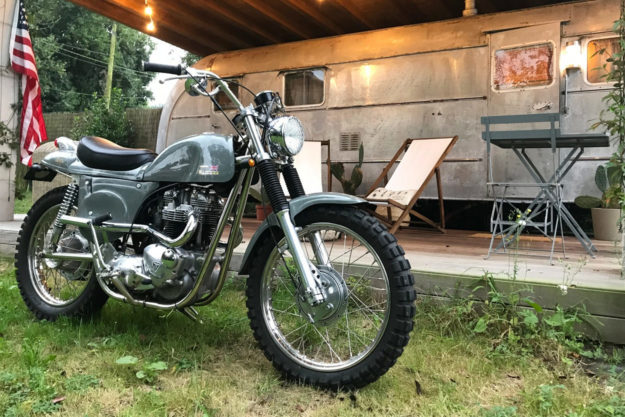
Rickman Metisse by Chelsea Borchert The Rickman Metisse is the quintessential desert sled, and one of the most iconic motorcycles ever. It was developed by the Rickman brothers in England in the early 60s, as a kit that could be ordered to fit the owner’s motor of choice (which, more often than not, was a 650 cc Triumph twin).
But did you know that you can still build a MKIII Metisse today? That’s exactly what Chelsea Borchert did. Her dad had a 1962 Rickman Metisse, so when she sold her last bike and started figuring out a replacement, the nostalgia hit hard. To compound things, she realized that she lived near the original Rickman factory—and that her parents were close to Wasp Motorcycles, who still manufacture Rickman frames. Bingo.
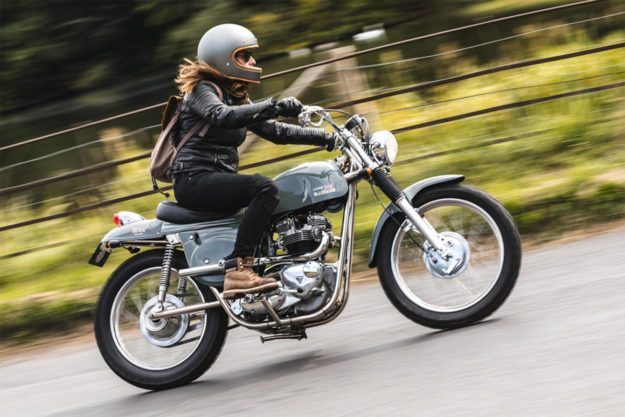
Chelsea ordered a kit from Wasp, and sourced a 1966 Triumph Thunderbird as an engine donor. Everything was hauled over to her dad’s workshop, where father and daughter began piecing it together.
The Metisse kit comes with the frame, all the bodywork (including a fiberglass tank), the swing arm, foot pegs, stand and coin chain adjusters. Chelsea added the forks and hubs from a 1974 Triumph Adventurer, polishing them up to a better-than-new finish. The idea was to build a street legal Metisse, so this one has lights at both ends, turn signals, mirrors, and switches from a Kawasaki. [More]
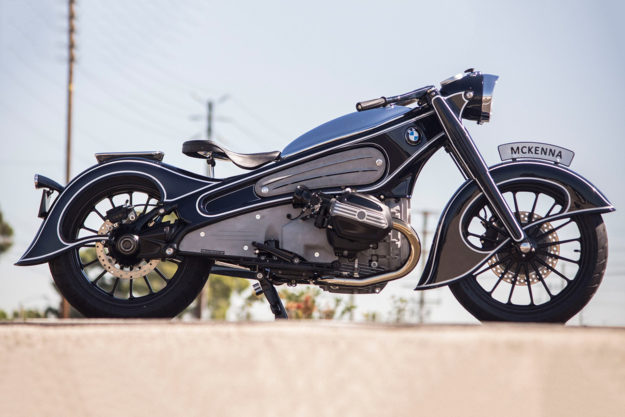
BMW R nineT R7 by Roland Sands Design If this R nineT custom looks familiar, you’re probably thinking of the NMoto Studio nineT kit we featured recently. At a quick glance, they could be siblings. But in reality, they only look similar because they’re emulating the same bike: the 1934 BMW R7.
Roland Sands Design took a very different approach with their homage to the one-off art deco boxer. The team started with a motor and transmission—then built the frame and replica bodywork from scratch. I was lucky enough to see the bike in the flesh at the Mooneyes show last weekend, and there’s a ton of trick stuff going on.

Those side panels—which were hand made from aluminum—not only look great, but hide away wiring too. The fenders are actually two Indian front fenders that were lying around in the RSD workshop, and the headlight bucket is from a Ural, and accepted the stock R nineT gauge with minimal fuss. Then there’s that color: a deep midnight blue that could almost pass for black.
A few modern touches from the RSD catalogue help keep this vintage-style machine unique. Those include the engine’s breastplate and valve covers, the floorboards, and a set of 19” Traction flat track wheels.
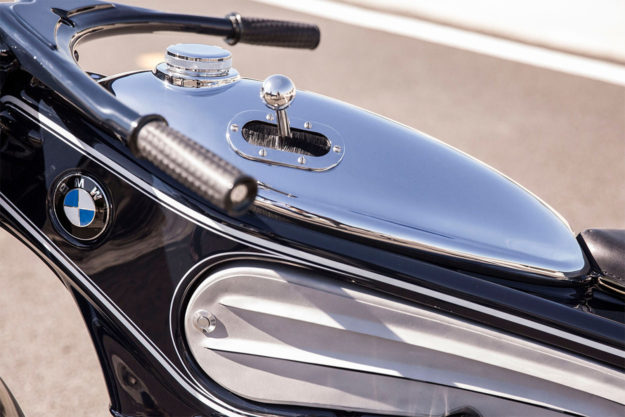
On the right, the brake’s been converted to a linked system with a heel shifter. There’s a heel pedal on the left too, but that’s actually the clutch; gearshifts happen on top of the tank, with a small shifter that harks back to the original R7. Everything is highly neat and tidy, and even the handlebar cabling has all be run internally.
There’s too much goodness to cram into this page, so we’ll sum it up with a score instead: ten out of ten. [More]

Honda CX500 by Seb Hipperson The Honda CX500 is a fickle donor. We’ve seen many that miss the mark horribly—but when a builder manages to make it work, the results are astounding. And Seb Hipperson’s certainly made it work with this sharp CX café racer.
His CX doesn’t come across as extreme on the first pass, but it’s well sorted. He’s added Honda CBR600RR forks, Tec Parts shocks that have been re-sprung to match his weight, and a new front brake setup. There’s a lot of fresh work inside the motor too, along with a pair of upgraded Mikuni VM34 carbs.
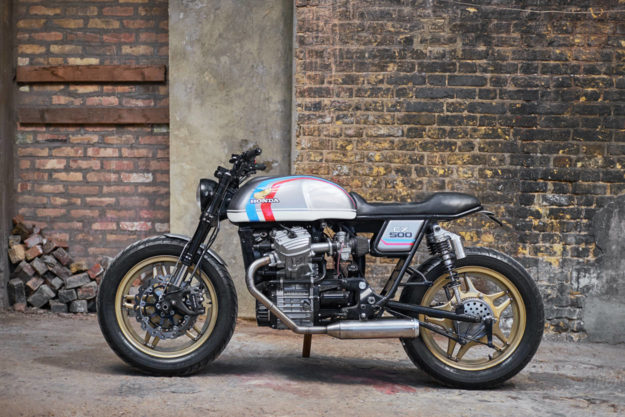
Seb’s done some subtle tweaking too. He lopped the top section off the fuel tank, then welded in the top of a Yamaha XJ tank. Then he added some fiberglass work to the bottom edge, to give it a smoother finish. The subframe’s custom, complete with little parallelogram-shaped areas that are now filled in with fiberglass side panels (where the air box used to be). Even the wheels are a mash-up, with bits from the GL1100 and CB900 grafted in.
A metallic grey paint job—capped with graphics in the Valvoline colors—finishes it off. Seb says he’s currently using it as a London runabout, but reports that it held its own at a classic track day at Caldwell Park. And we believe him. [More]
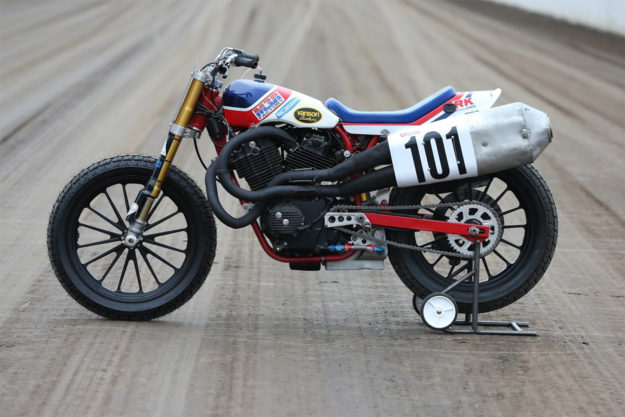
The Honda RS750 It seems like hooligan flat track events happen every other weekend, and that means builders are building bikes to enter them with. But this Honda isn’t some haphazard hooli-racer—it’s a bona fide race bike from the 80s. So although it doesn’t meet the ‘custom’ or ‘bikes of the week’ criteria, when it popped up in our feed this week, we knew we had to share it.
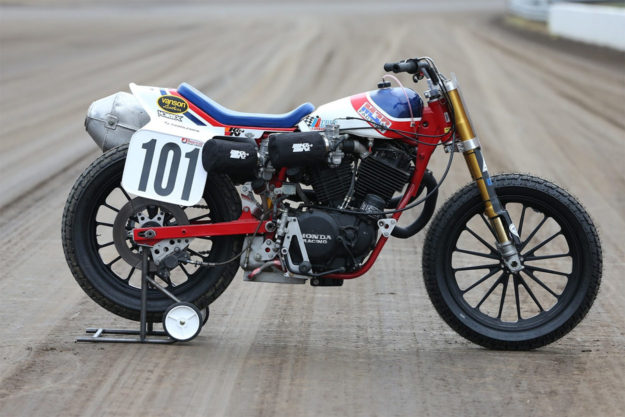
The story goes that, by the mid-1980s, Honda was dominating most styles of racing—except flat track. So they started developing a new flat track race bike, using the liquid-cooled 52-degree, SOHC 742cc V-twin from the XLV750R (also known as the Africa Twin). The RS750 was then developed around the motor.
The RS750 started taking names straight out the gate. It won its first race out, at the 1983 De Quoin Mile. Then Bubba Shobert and the late Ricky Graham won six races each in the next season, with Graham narrowly beating Shobert in the overall. Shobert hit back the following year, and took the overall title three years in row. [More]
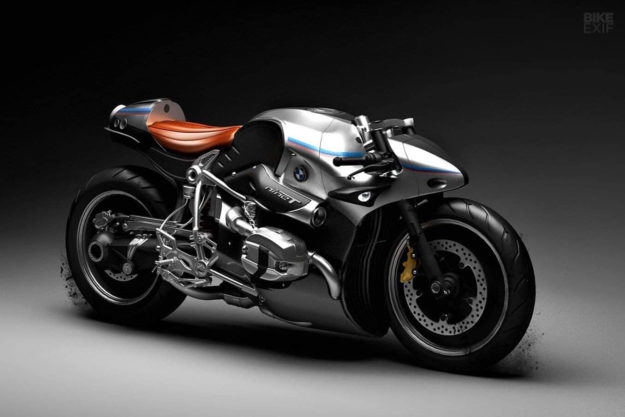
Aurora by Mehmet Doruk Erdem Social media is full of renders of custom motorcycles—but we have a chronic aversion to them. That’s because nine times out of ten, they’re vaporware; concepts that never see the light of day.
But Mehmet Doruk Erdem gets a free pass. His designs are evocative and extreme—and he’s got a solid track record. His Alpha concept, for example, was masterfully translated into metal by builder Mark Atkinson.
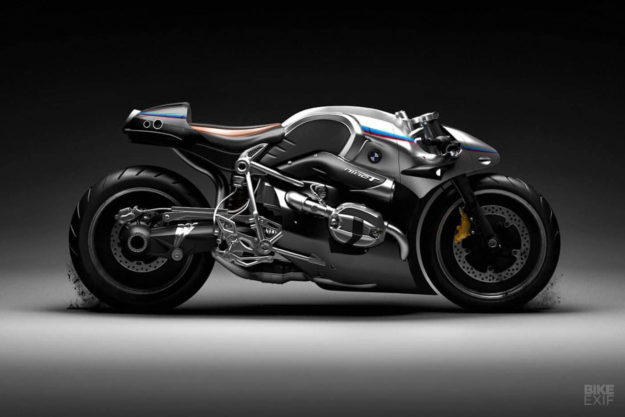
This is his latest design: ‘Aurora,’ based on a BMW R nineT. It’s a commission, and Istanbul-based GB Motobike are booked to build it. Mehmet’s kept some of the nineT’s core bits—like the fuel tank and tail bump—but he’s reworked it with extra bodywork and an extremely aggressive stance.
Some of the details are bound to cause headaches, like the exhaust that appear to exit through the tail unit. Still, it’s a killer concept, and we’re looking forward to seeing it come to life.
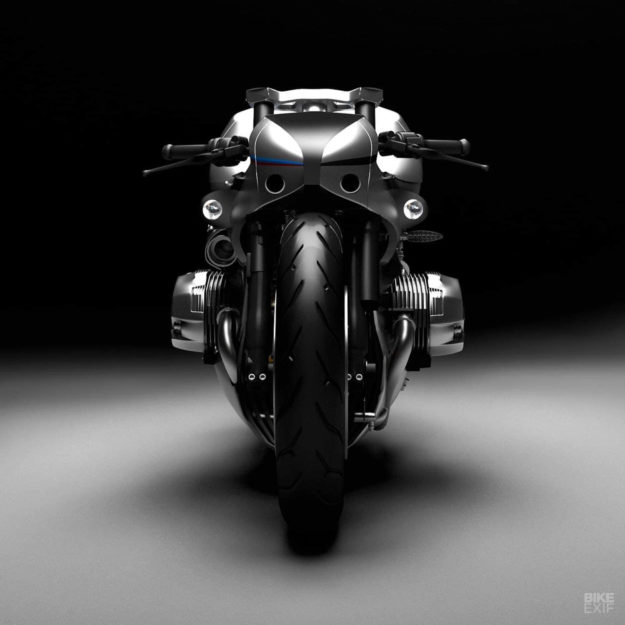
from Bike EXIF https://ift.tt/2rrlom5

No comments:
Post a Comment